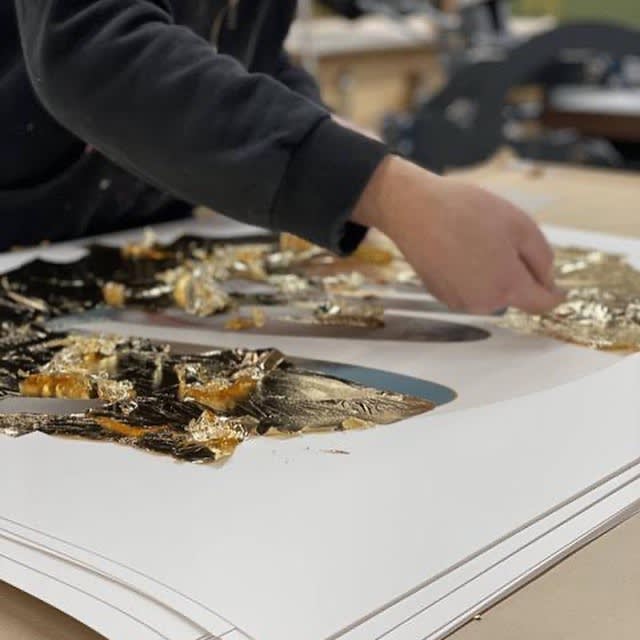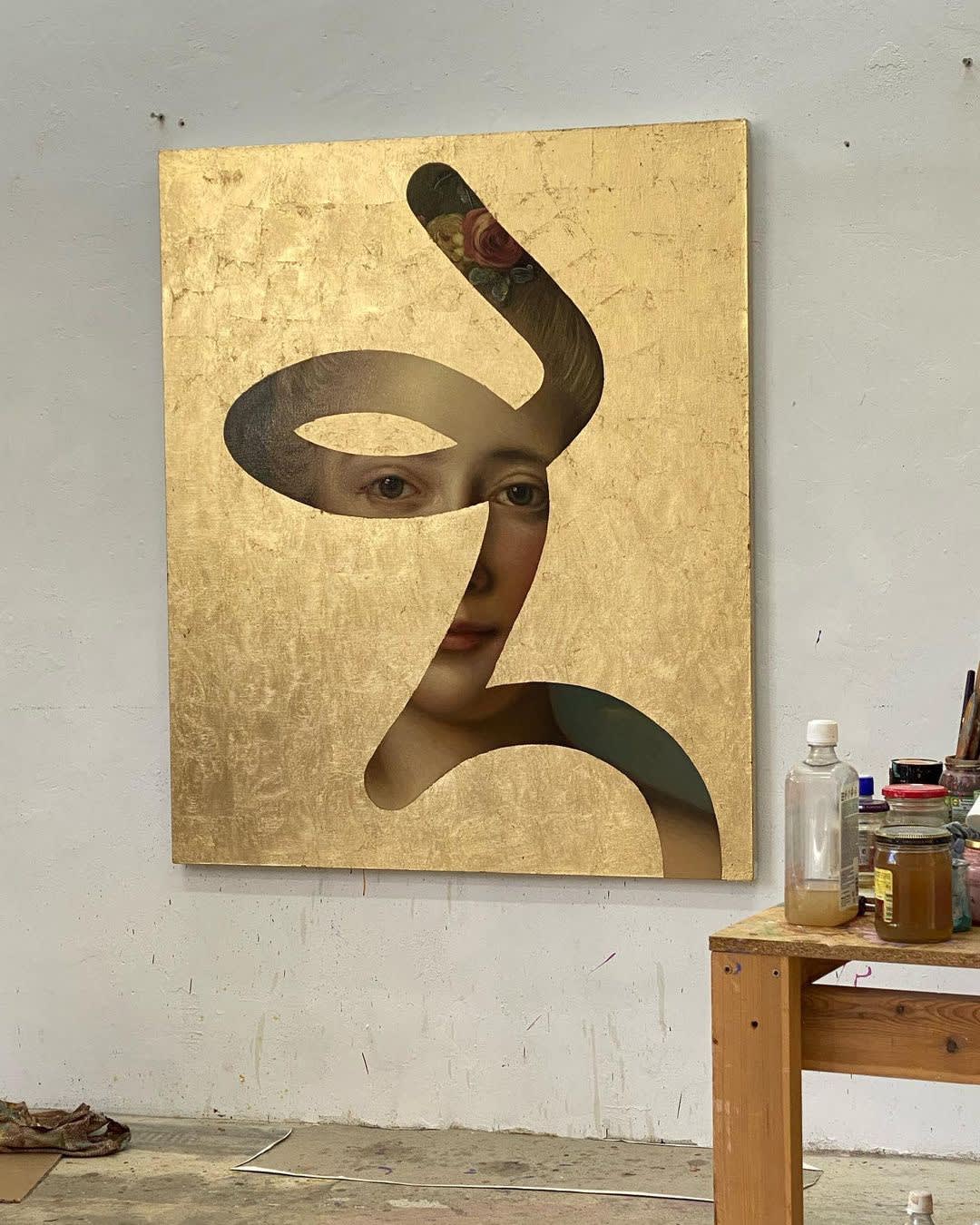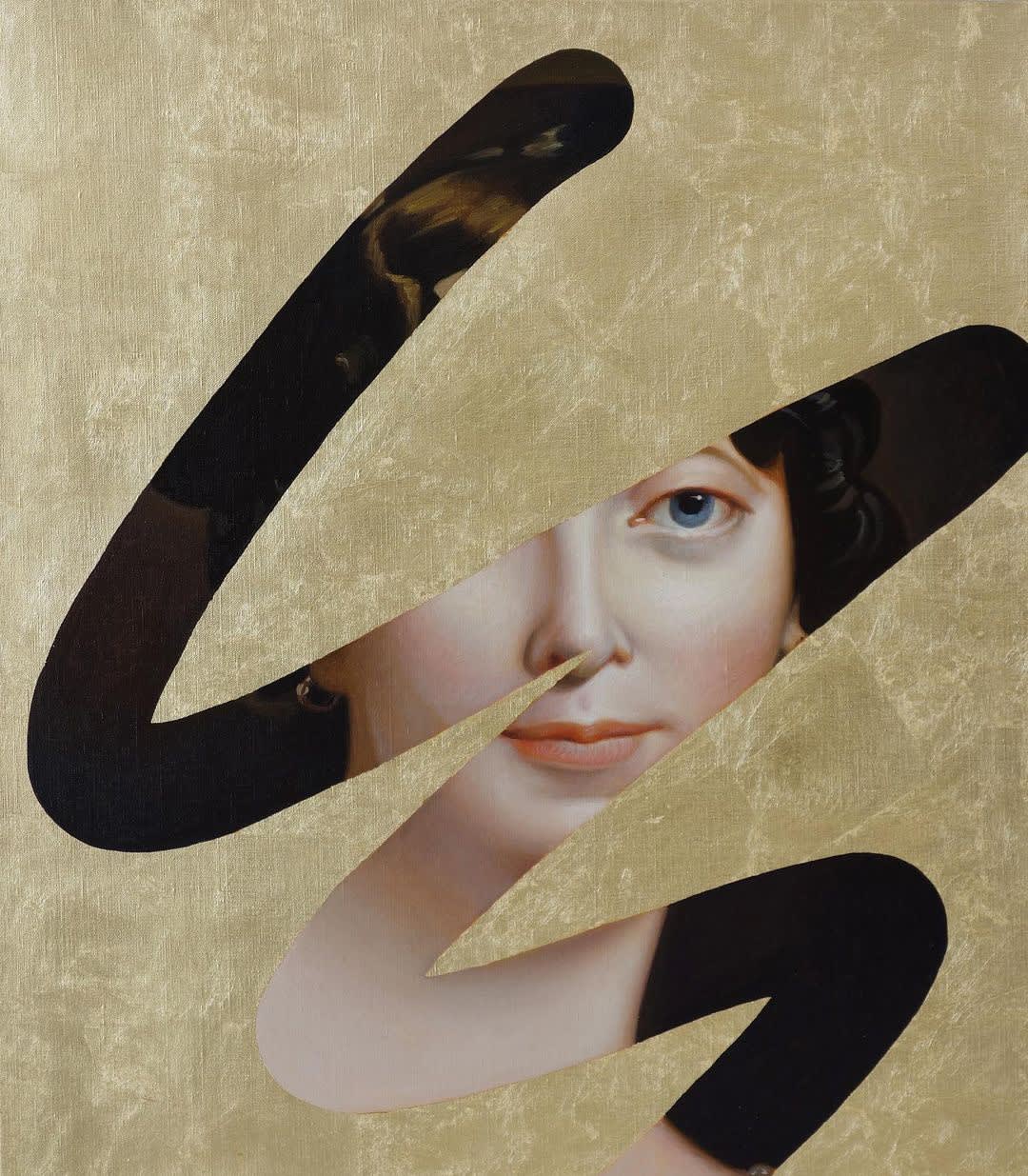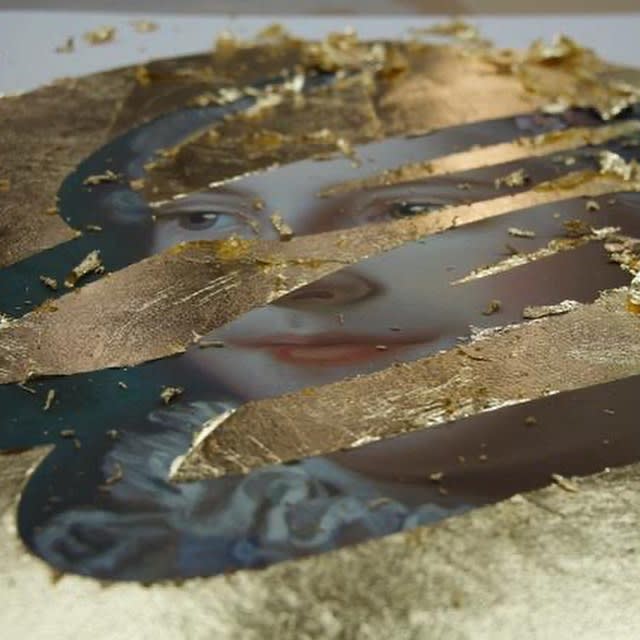Lino Lago is a Spanish-born artist, who continuously pushes the boundaries of contemporary art practices. Painting with technically traditional oil paints and inspired by the imagery of classical European portraits, Lago’s work has a distinctly contemporary feel.

In his UK debut solo exhibition Fake Abstract, which was showcased by RHODES in 2020 the artist playfully treats his viewers to snippets of portraits through squiggles across monochrome canvases. Lago’s latest series continues to follow this unique narrative and expands on the themes explored in the Fake Abstract, developing the ongoing discourse between the old and the new via bold and diverse creative decisions.
While Lago incorporates variety of bold statement colour in his work, including Millennium pink and Yves Klein blue, perhaps one of the most striking monochromatic backgrounds of his remains gold, created with golden leaf technique.

Gold leaf or gold foil is gold that has been beaten into a very thin sheet, only about 0,12 microns in thickness. The use of gold leaf started with sculptures and decoration dating back to Egypt, where the colour was reserved for the gods and pharaohs. This ancient narratives about the material have persisted into modernity, solidifying the perception of gold as a strong symbol of authority, sacred power, and prosperity.

Early Christian and Medieval artists adopted the use of golden foil to decorate important books and illuminated manuscript. Throughout the Middle Ages and Renaissance periods, the Church remained the main patron of art, leading to the demand for religious subjects matters providing the ideal setting for the luminous gold colour, representing celestial, heavenly light.

The Baroque period introduced the use of gold as a colour and the material itself to the European courts in its full glory. From that time onwards gold has started to move away from its previously strictly ecclesiastical use, becoming more and more accessible and versatile throughout 1700 and 1800 – the periods Lago takes his inspiration from the most.

However, whilst distinctly influenced by the art academies of the late 18th and early 19th century, there is no doubt that both, conceptually and visually, Lago’s work belongs to the milieu of contemporary art. Nonetheless the artist manages to re-claim traditional artistic methods and, in a way, critiques the contemporary art world’s notion of operation outside of any historical context. Instead, he alludes to the history of art in a unique and radical way.

RHODES will be hosting Lino Lago second solo show in October.
Email to register your interest.

